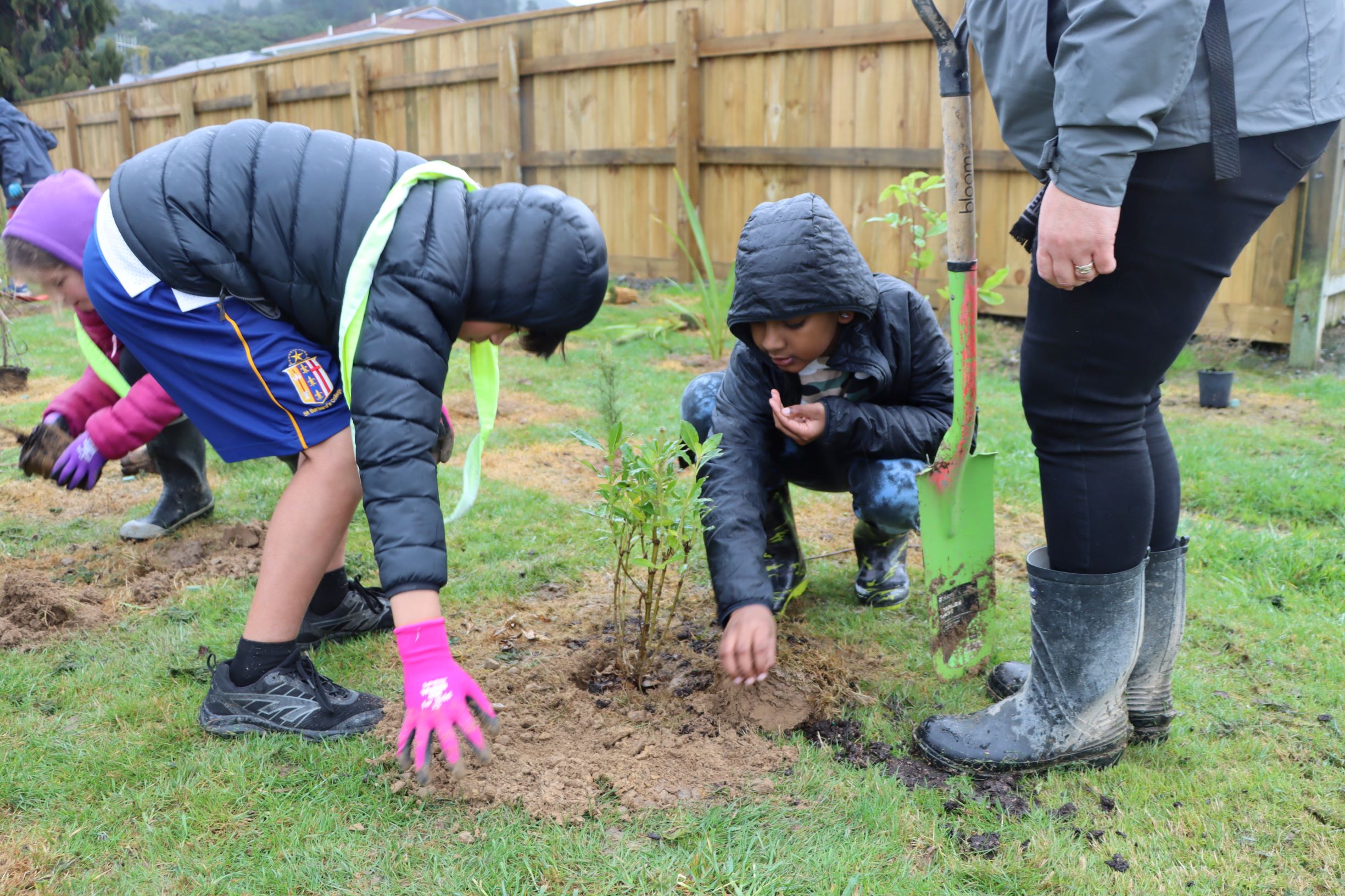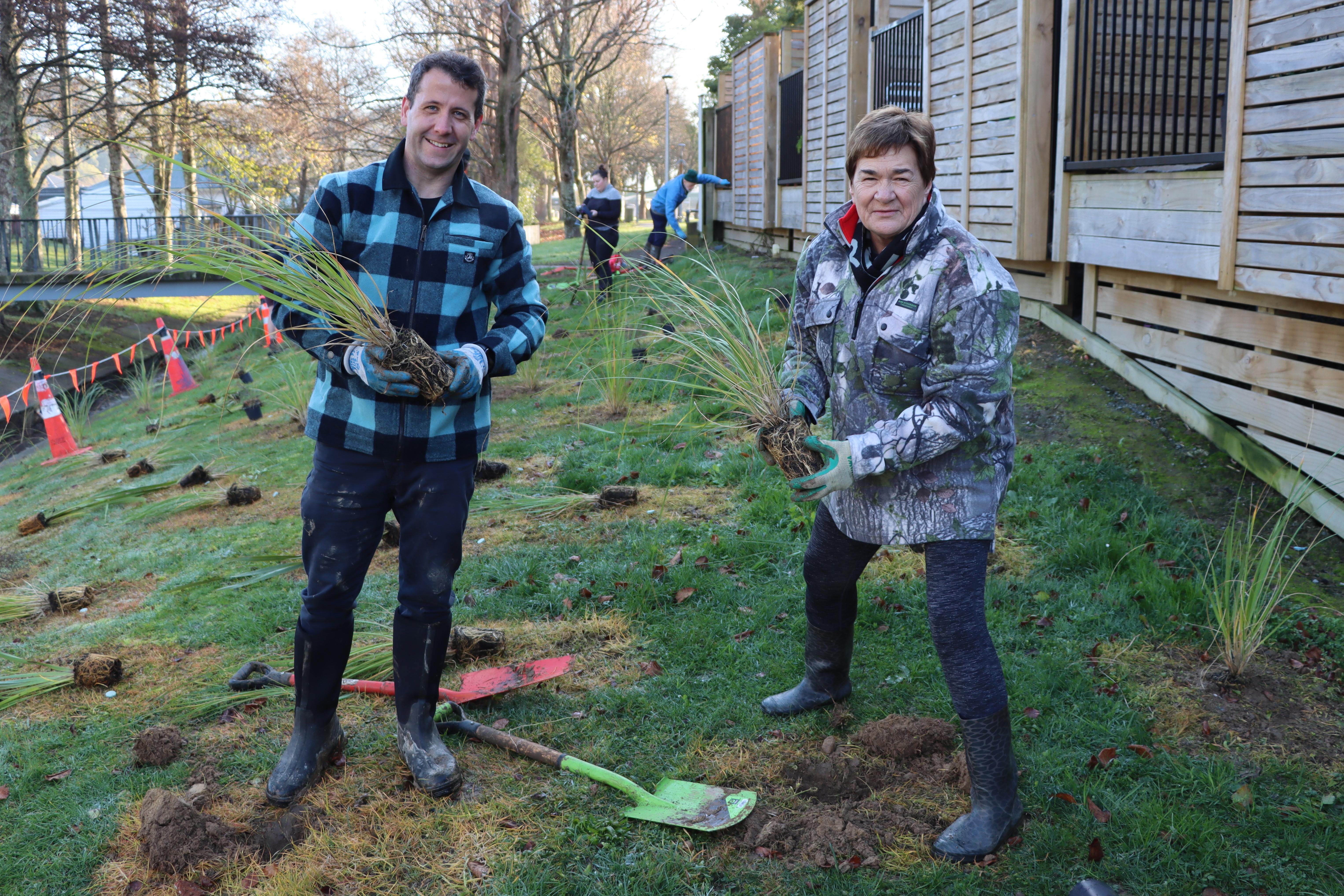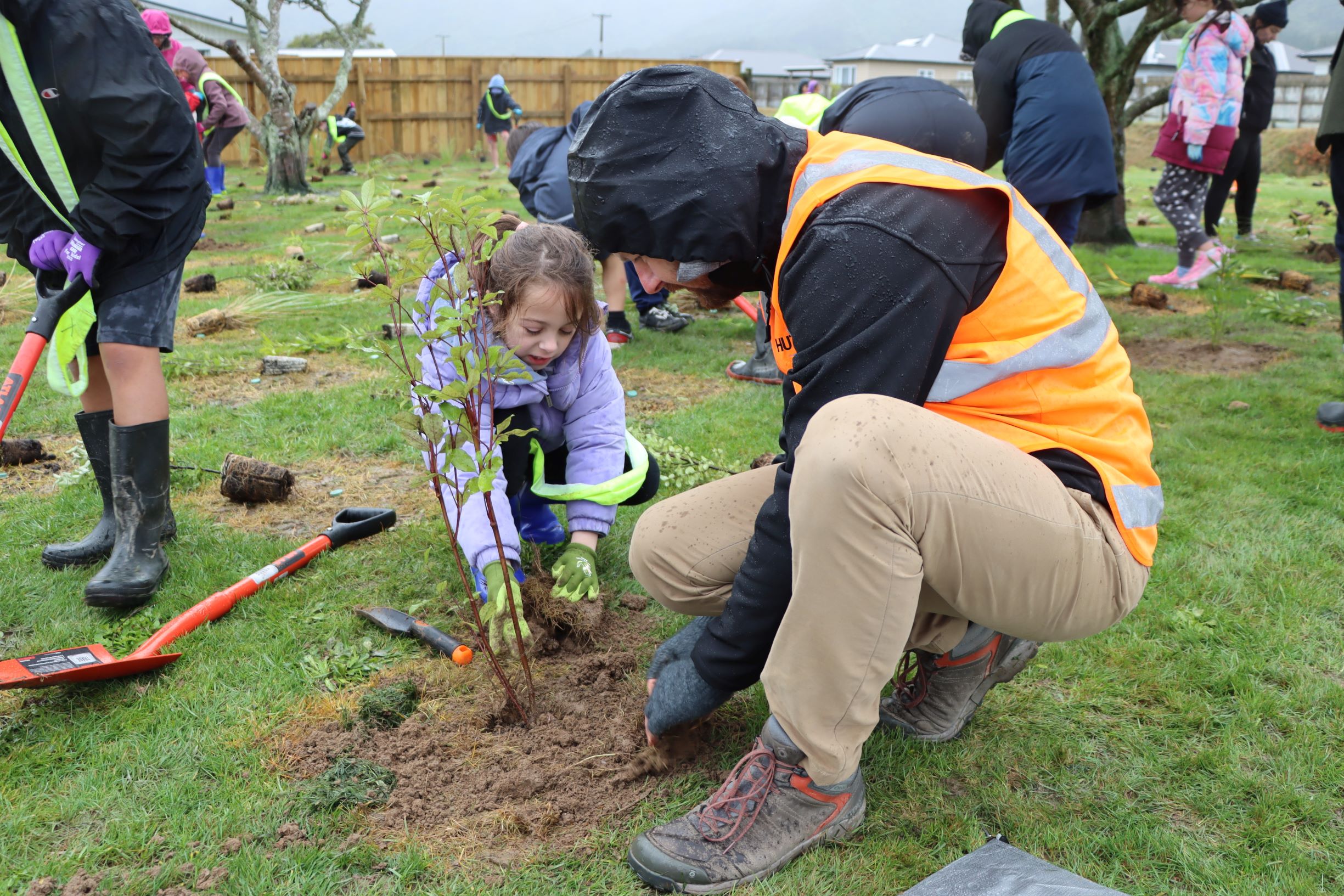Mouri Tupu is a community campaign to plant 114,000 native trees and plants Lower Hutt and inspire citizens to pick up a spade and join in.
It will deliver Mayor Campbell Barry’s 2022 campaign pledge to plant one native tree or plant for every citizen of Te Awa Kairangi ki Tai Lower Hutt.
To date 73,397 natives have been planted across Lower Hutt since October 2022 by Hutt City Council and community organisations.
Mouri Tupu is one way we are delivering on our Indigenous Biodiversity Strategy, in particular the goals of protecting and restoring indigenous species and their habitats and connecting our community with nature.
If you want to get in touch, email us at mouritupu@huttcity.govt.nz

 | 2024's Planting SeasonIn 2024, we launched our campaign with several community planting events. We planted 10,000 plants at York Park in Moerā, Delaney Park in Stokes Valley, and Arakura and Leonard Wood Parks in Wainuiomata. Through our partners at Enviroschools, we were joined by several schools in Lower Hutt and we will be running a bigger schools programme in 2025. Our community plant gifting days were extremely popular and we gave away 2500 free native plants to the community. Sign up to our newsletter here to be the first to hear about our community planting events in 2025! hutt.city/plant-sign-up |
Interactive Planting Map
Check out all the planting that our community is doing across Te Awa Kairangi ki Tai on our interactive map!
Add your own planting projects by dropping a pin to where you've planted native species.
Mouri Tupu – our name
The name Mouri Tupu was gifted to the project by Kaanihi Butler- Hare, Tumuaki Māori at Hutt City Council.
Mouri is the life force or energy present in everything; not just living things like animals or plants, but also inanimate objects, places, and man-made items as well. This energy is nurtured and grown, or neglected and stunted, depending on our interaction with and care for the energy. Tupu refers to the early stages of the plant life cycle and encompasses the whole process of growth itself.
Mouri Tupu is our way of recognising that everything has the potential to grow and thrive, powered by the energy that flows through all things, and sustained by our interaction and care of it. This is why we are committed to ensuring a community in which everyone thrives; and we can only thrive if our environment is suitable.
FAQs
Biodiversity describes the range of species that can be found in one area, and includes all living things from plants and animals to bacteria and fungi. Each of these organisms work together in ecosystems, like an intricate web, to maintain balance and support life. Biodiversity supports everything in nature that we need to survive: food, clean water, medicine, and shelter.
The species that are native to Aotearoa are our indigenous biodiversity. Many of these are found nowhere else in the world and are a great source of pride and cultural significance for the people of New Zealand.
The Indigenous Biodiversity Strategy sets a framework to guide Hutt City Council, Mana Whenua and the wider community in working together to protect and restore our indigenous biodiversity. The strategy sets a shared vision and goals to guide us and identifies focus areas where we can work together to make a difference. You can read more here.
The Mouri Tupu project will increase the number of indigenous plants in Lower Hutt. As these plants grow, they will provide food and habitat for native birds and insects, further improving ecosystem stability. These plants will also store carbon, clean the air and filter water.
Our residents support us making Lower Hutt a greener city. 83% of surveyed Lower Hutt residents told us planting natives is critically important. Nearly 70% of surveyed residents said that enhancing indigenous biodiversity in reserves, gardens and park is critically important.* Taken from the Indigenous Biodiversity survey: https://hutt.city/biosurvey
We’re planting a range of natives, including Karamū, Cabbage tree, Koromiko, Ngaio, Kānuka, Mahoe, Tarata/Lemonwood, Kohuhu, Five-finger, Harakeke/Lowland flax, Mingimingi, Shrubby tororaro, NZ Toe Toe, Kowhai and Toothed lancewood.
Planting native trees in sports fields helps increase biodiversity in our local neighbourhoods. These native trees will provide habitat and food sources for birds, insects, and lizards, allowing more indigenous wildlife to thrive in our urban spaces.
Planting native plants in Lower Hutt will create a greener city, providing greater access to nature in our own neighbourhoods. Exposure to nature is great for physical and mental health. Spending time in nature also fosters a sense of connection with the natural world. By partnering with the community to achieve the Mouri Tupu goals, residents are invited to come together on planting days to engage directly with nature.
We use a combination of methods to ensure successful plant maturity, that include using local/eco-sourced plants that are hardened to the local environment, planting during winter to reduce drought risks, and "tree releasing" using hand weeding, along with the targeted use of the herbicide for the first three years to allow seedlings to establish.
Carbon sequestration refers to the process by which carbon dioxide (CO2) is removed from the atmosphere and stored in carbon sinks such as forests, oceans, and soil. This process helps to mitigate climate change by reducing the amount of CO2 in the atmosphere, which is a major greenhouse gas responsible for trapping heat and contributing to global warming.
By planting indigenous plant species, you're not only restoring native ecosystems and supporting biodiversity but also actively contributing to carbon sequestration efforts. This can help to mitigate the impacts of climate change by reducing the amount of CO2 in the atmosphere, thus helping to stabilize the Earth's climate.
The mouri of Te Ara Tupua, the living relationship between the ngahere (the bush), the cliffs, the water ways, hinemoana and everything that lives within that environment have their own individual and interdependent vitality.












